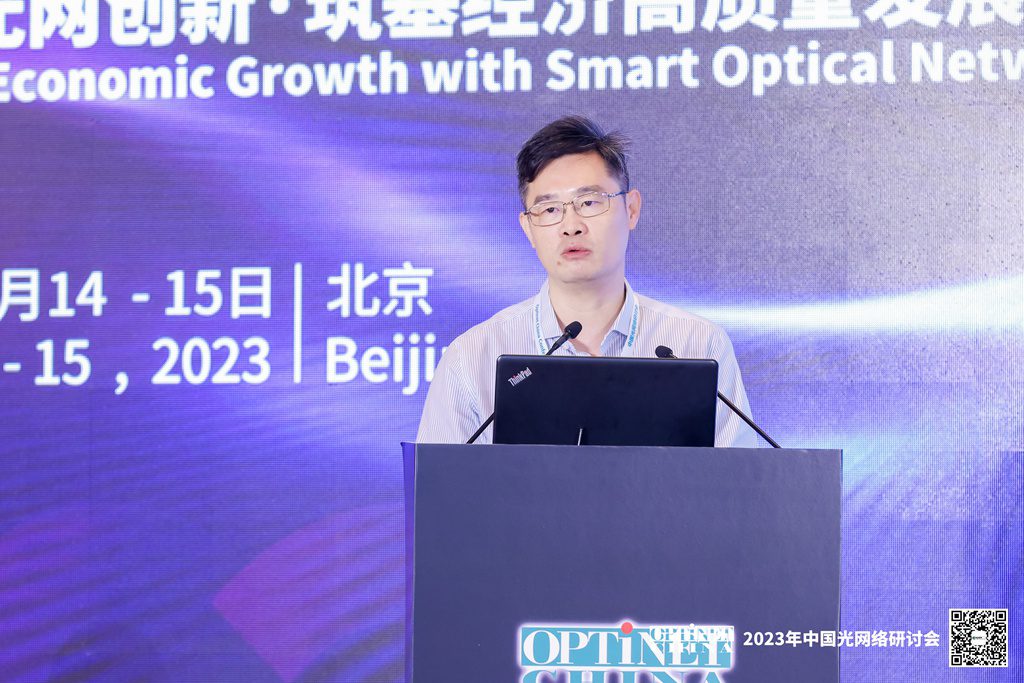400G QPSK
China Mobile to deploy 400G QPSK by the end of 2023
China Mobile is preparing to deploy 400G optical links and expects to call its first tenders by the end this year. At the 2023 China Optical Network Symposium on Thursday, Li Han, director of the Basic Network Technology Research Institute of China Mobile Research Institute , gave a speech and revealed that China Mobile has confirmed the availability of 400G technology and will start the centralized procurement of 400G products at the end of this year to promote 400G to enter the commercial stage. “It’s time for 400G, and the industry is looking forward to it.”
 China Mobile completed the world’s first 400G QPSK pilot with vendor partner ZTE in March, achieving high-speed transmission over 5,616 kilometers of ultra-long-distance land real-time live network transmission. The verified computing power network 400G all-optical network technology is the core technology of the next-generation intergenerational evolution of the backbone transport network.
China Mobile completed the world’s first 400G QPSK pilot with vendor partner ZTE in March, achieving high-speed transmission over 5,616 kilometers of ultra-long-distance land real-time live network transmission. The verified computing power network 400G all-optical network technology is the core technology of the next-generation intergenerational evolution of the backbone transport network.
Li Han believes that 400G is an intergenerational technology of optical communication and a disruptive technology. The reason is that 400G optical communication has entered the broadband era, and the C6T+L6T band is disruptive to the entire system including core optical devices. Specific to the application scenario, the backbone network considers the long distance and adopts the QPSK method, and the metropolitan area network considers the cost, and mainly deploys 16QAM-PCS or 16QAM. In different scenarios, different techniques are used.
China Mobile’s 400G research and development has gone through 5 years. From 2018 to 2021, it will mainly study 16QAM-PCS or 16QAM; in 2022, with the development of 130G baud rate optical modules, the industry chain will turn to QPSK driven by the three major manufacturers. This is of decisive significance to the development trend of 400G.
Li Han finally emphasized that 400G still needs to continue to improve technology, such as EDFA, which needs to substantially integrate C-band and L- band . In terms of optical fiber , research on anti-resonant hollow-core optical fiber should be promoted.
In a white paper, China Mobile said Jiuzhou would encompass 400G optical connectivity and a distributed cloud architecture, with edge computing and three levels of latency, from 1 millisecond in the city to 20 milliseconds in the countryside. The paper said the 400G OTN would initially be deployed at major computing hub nodes, then in the backbone.
A major driver of China Mobile’s optical plans is a government scheme to build out China’s national “computing power network” – a chain of data centers and high-speed fiber links that will support the new computer-intensive era of AI, deep learning, 5G Advanced and the industrial Internet.
One key part of this is the East-West plan, in which data from the industrialized eastern seaboard is being hauled to lower cost, renewables-powered data centers in the less developed west over high-speed links. So far China Mobile has deployed more than 40 super-large data centers with more than 1.3 million racks and over 1,000 edge nodes.
Li said the telco’s 400G R&D had initially focused mainly on 16QAM-PCS and 16QAM, but last year had turned to QPSK, driven by breakthroughs from three domestic vendors.
Zhang Bin, vice president of FiberHome’s network business unit, said he believes 400G OTN will dominate optical fiber for the next ten years. But he said Chinese manufacturers would need to invest more in R&D to keep pace with the large-scale rapid rollout
References:
https://www.c114.com.cn/news/22/c22780.html


